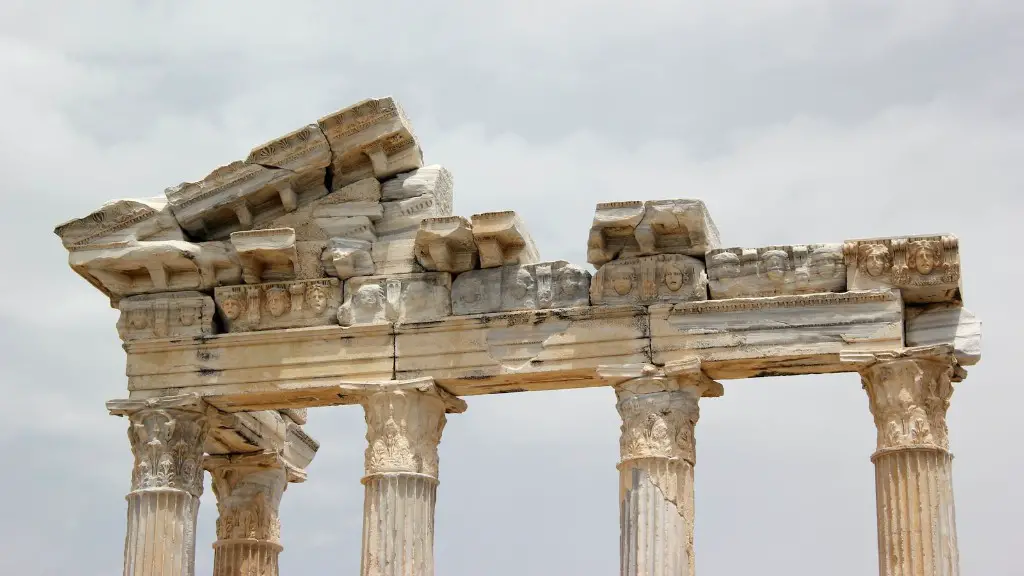When Did Girls Get Married in Ancient Rome?
During the Ancient Roman Empire, the legal age for girls to marry was twelve years old. This was the age that girls became betrothed to their husbands and subsequently married. Girls married at a younger age in the period of the early Roman Empire, and the ages ranged from six years old to as old as fifteen years of age.
Women from wealthy families would have happier marriages because of their families’ ability to provide a dowry, while those from poorer households often married in order to escape destitution. Girls were mainly married off as soon as they were old enough, as marrying off a daughter indicated a family’s financial stability. A father kept control of his daughter’s dowry until she married, which is why the age of marriage was so young in those days. This tradition was the basis of the Roman law of patria potestas, which gave the father power to decide even the most important matters of his daughter’s life.
Boy-consorts, too, were in demand during the time of Ancient Rome. The father of the girl typically chose the man his daughter would marry, based on his standing, wealth and character. Teenage boys younger than fifteen years of age might be married to very young children, whether it was for political or dynastic reasons.
Young age marriages often brought a lot of physical, mental and sexual exploitation if the man-consort was much older than the woman. These cases suggest that the child marriage was a tool to maintain and advance social, political and military alliances, with women being the bargaining pieces and subjects for arranged marriages.
Divorces were relatively uncommon and were frowned upon by society. Women had little say in the decision to get married or divorced. Widowed women were heavily stigmatized and had to undergo tedious rituals and rules, set by the Roman Empire law, in order to marry again.
In the last two centuries of the Roman Empire, the legal age of marriage was raised to fourteen, but the custom of teenage marriages still continued. In some countries, such as the United States, the legal age of marriage is still 18 years old. This highlights the enormous differences between ancient Rome, which understood child marriage as a tool for political, financial and social stability, and the present which seeks to prevent it.
Women And The Family Unit
In Ancient Roman society, it was important that a woman had a male protector. This protector could either be her father or her husband, who were both seen as having the same level of control over a woman’s life, even if the husband did not possess any of her dowry. Women were responsible for the moral upbringing of their children, who, much like their mother, were generally seen as property.
Family was important to the Ancient Romans, and it was believed that a successful family was one that could provide for itself and remained obedient to their elders and to the authority. Women were the primary caregivers of the household and were responsible for managing the family’s finances.
It was expected that a woman be faithful to her husband, and she was legally prevented from being involved in any other relationship. Women that did not follow this rule of fidelity would be castigated and publicly shamed.
Women’s Political Participation
Women were not allowed to participate in political life and could not own land, but they played key economic roles, as they controlled the family finances and were able to run businesses.
They were able to influence the political decisions of their husbands, with some women becoming influential political advisors. These women were reluctant to engage in politics publicly, though, as it might tarnish their reputation.
Women did, however, have the right to inherit family property. This usually sparked disputes between brothers and sisters, which would often be solved through the “father-daughter bond”, which implied that the eldest daughter of the deceased would inherit the entire estate.
Certain noble women possessed vast amounts of land, and some families would even delegate the ruling to women when a father was away for long periods of time.
Women’s Education
Education was scarce for women in Ancient Rome. It was typically limited to the education of reading, writing and arithmetic. Although some wealthy women were well-educated and could write poetry or develop philosophies, these women were an exception rather than the rule.
Religion was an important part of Ancient Roman education and was strongly intertwined with the general personal education of women. It was believed that girls should be taught morality and religion in order to become wives and mothers. Girls were educated on ritual practices, deprivations and how to deal with household matters.
Women usually married at a young age and were unable to continue their education post-marriage. Women of higher social classes, however, were allowed to observe religious services and take part in literature circles in order to improve their knowledge and often indulged in recreational activities such as playing music or singing for entertainment.
Legal Status Of Roman Women
The legal status of women in Ancient Rome was determined by their fathers or their husbands. Fathers and husbands held the power over any decisions concerning the woman’s body, financial situation or education.
Women were legally prohibited from voting, holding public office, and owning or inheriting property. They were, however, allowed to own slave property, which provided them with some financial protection in times of need.
Although a woman was mostly dependent on her husband or father, the Ancient Roman law was quite progressive and provided widows with some financial protection. Widows were allowed to keep one third of their husband’s estate and had access to the resources of their children’s estates.
Roman women were legally able to make contracts and enter into financial transactions and were also able to take legal action if wronged, though this right was only granted to upper-class women.
Public Life Of Women
Women could appear in public only while accompanied by a man, or with written consent from their husbands. They were not allowed to attend the public baths, and the gymnasium was off-limits for the most part, though women were allowed to watch the games from their own section.
It was believed that women should take part in religion, for which they attended religious processions and theatrical performances about the gods. It was also believed that women should take part in charitable works, and some women became deeply engaged in philanthropy and helped the poor and sick. Women were also allowed to attend some public events, such as lectures and musical performances.
Women were only allowed to own slaves that were owned by their husbands or fathers. This restriction was due to the fact that Roman society did not trust women, and so they were not allowed to own any property.
Women’s Fashion In Ancient Rome
The Ancient Romans highly valued the aesthetics and so the dressing of women was very important. Women were expected to dress modestly and in keeping with Roman social standards. Rich and powerful Roman women would wear clothes to signify their wealth and power, while poorer women would wear clothes that were practical, comfortable and not overly luxurious. Clothes were usually made from wool, linen and silk.
Women had some freedom to choose the fashion items they wore to some degree, as long as it was in line with what was acceptable. There were certain elements of clothes that could not be altered, such as the toga, which was always symbolically white, and the palla, which was the traditional garment worn by the Romans. Shoes were made from leather and were usually plain, though sometimes they had intricate designs.
Makeup and hairstyles were another way for women to enhance their physical appearance. Rich women would use makeup to draw attention to their eyes, lips and cheeks. Hairstyles were used to signify social status, and some women would even dye their hair to show their wealth.





